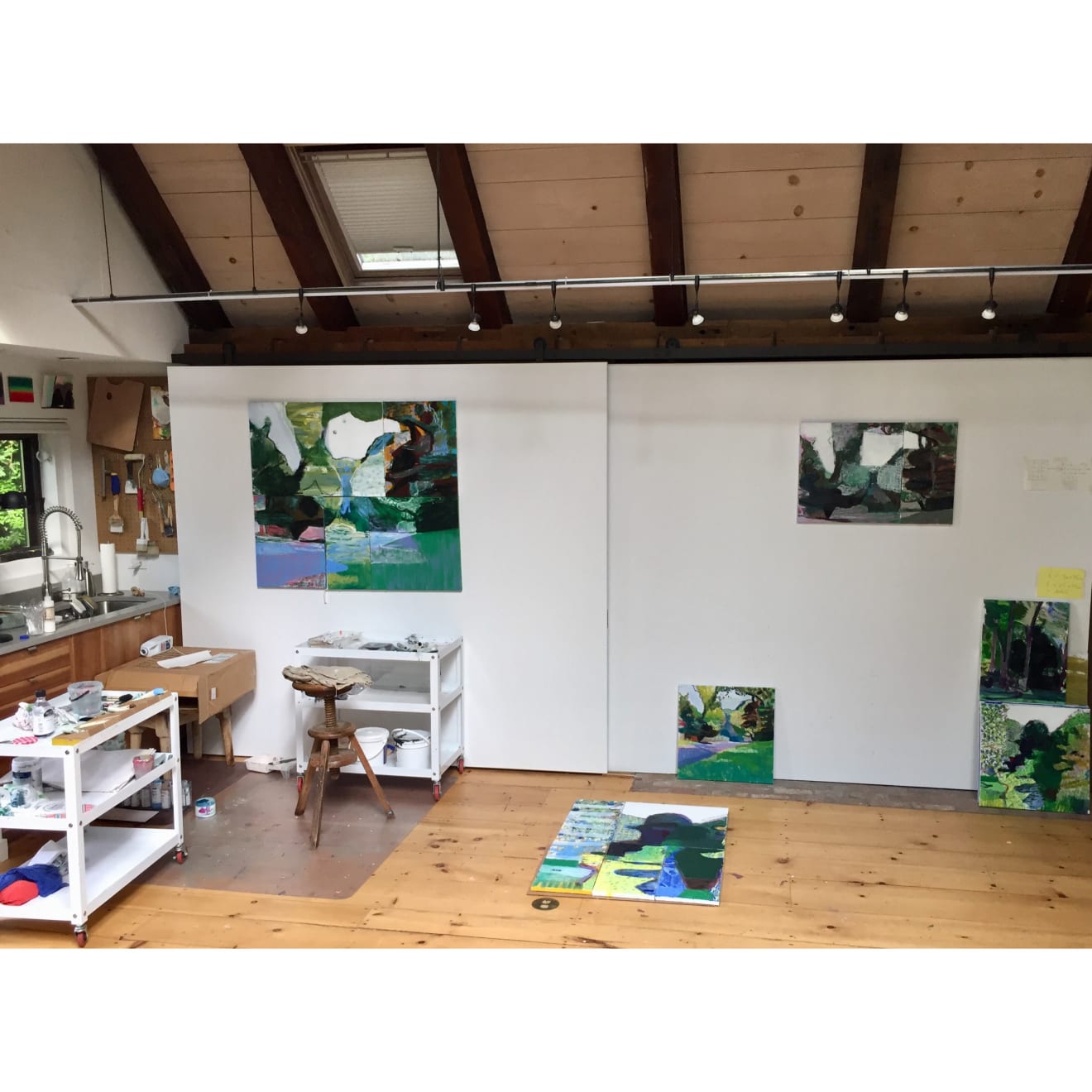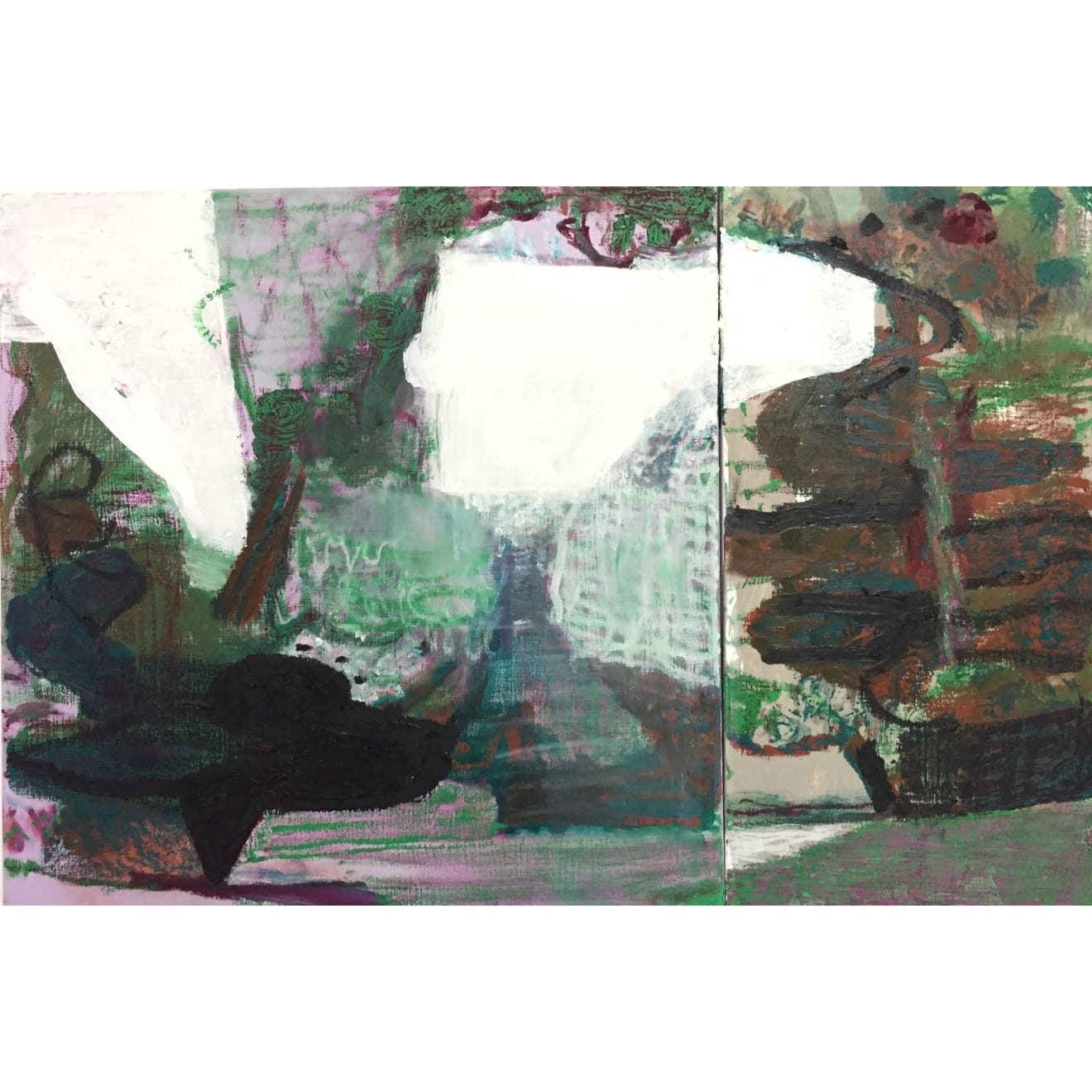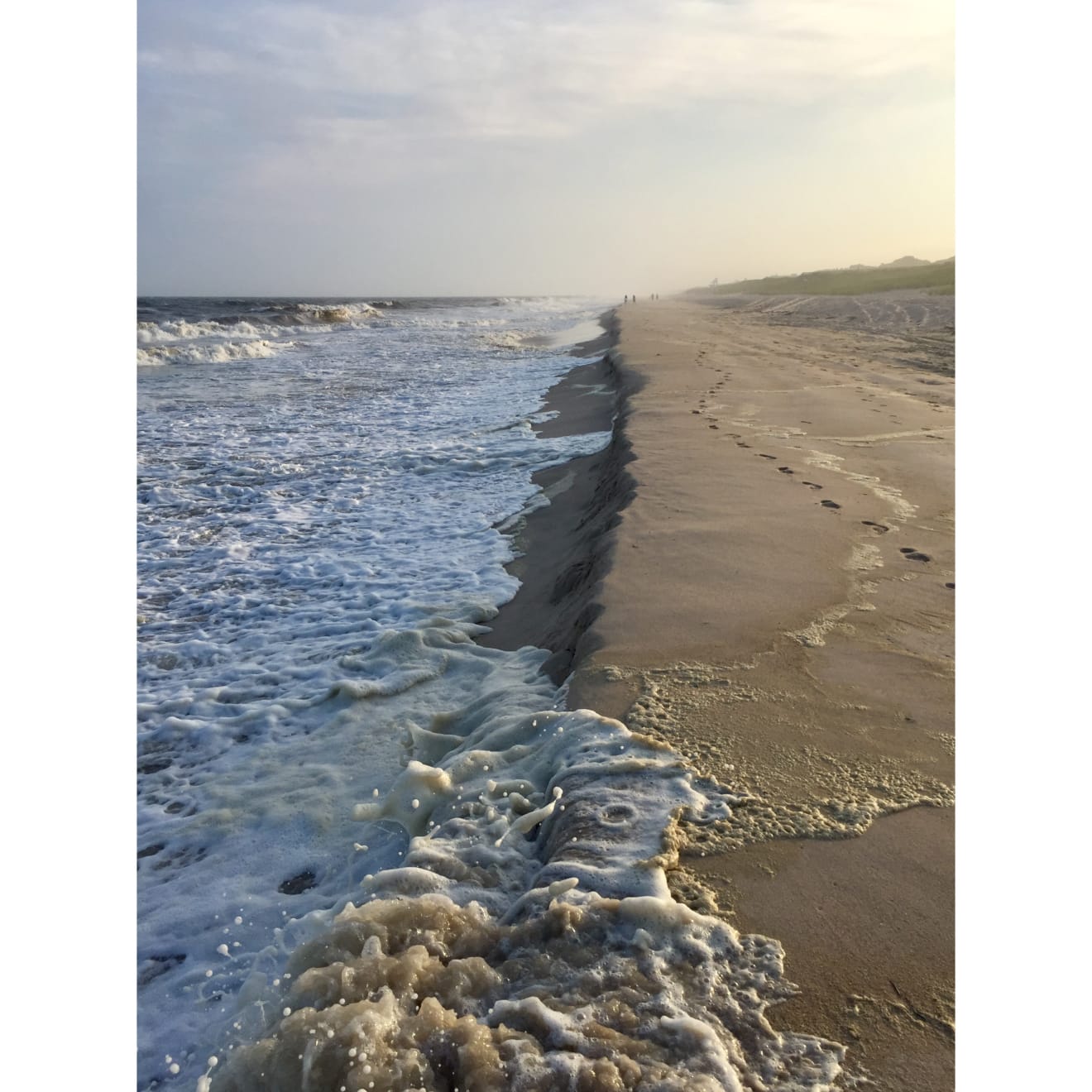Following his residency in the Hamptons with the FoAIR Artist In Residency Program, we sat down with the Belgian visual artist, Piet Raemdonck to discuss the extraordinary landscapes he produced during this travels to the US.
OTOMYS: Firstly, we would love to learn more about your time in Long Island and the FoAIR Artist in Residence Program.
Piet Raemdonck: I stayed for one month exactly. I worked in a very disciplined way, working from the morning until the evening and during weekends.
I stayed at the house of Christina and Alan MacDonald, who introduced me to their friends in the neighbourhood, several of who work in the arts.
OTOMYS: What did you enjoy most about this residency and working in the Hamptons?
Piet Raemdonck: It's interesting to work in a new environment. East Hampton is just stunning. It is full of greenery, and the Atlantic Ocean right around the corner. I could dive in the pool in between painting sessions too.
OTOMYS: Your landscapes employ such vivid and often surreal colours. What in the landscape inspired you to use these colours?
Piet Raemdonck: I don't experience my colours surreal myself honestly. I might exaggerate and intensify, but I am also responding to what I see in the natural world. Amagansett where I stayed has quite a dense vegetation, and I guess the humidity of the nearby Ocean guaranteed very lush foliage and deep greens.
OTOMYS: Could you explain the significance of Goethe’s colour theory in your practice?
Piet Raemdonck: Where shall I start? I think Goethes' 'Zur Farbenlehre’ (on the colour theory) is a treasure. This really is a uomo universalis speaking, a man interested and gifted in so many fields.
A lot of his writings start with very simple observations of nature, which makes the book very 'alive' to me. When I read the book, it felt like Goethe was in the room with me. There is a great attention to how colours are interconnected. I think some of Goethes visions on colour are more important than Newtons. He is anti-linear, circular, holistic, and very sharp!
It was Goethe who said that “colour is about 6, and not about 7,” enabling a crystal-clear structure of complementary colours. In my personal approach on colour, the concept of complementarity colour is paramount.
OTOMYS: How has your practice evolved during this residency?
Piet Raemdonck: I wanted to use the 'travelling' idea directly in my painting practice during the residency. I'm used to painting in open air when travelling, so this was a natural process for me.
I decided to make small paintings in open air; in the garden where I stayed, or just along one of the lush drives, or on the beach.
Back in the studio I reinterpreted these small works on a larger scale. A larger scale obtained - in a very loose way - by assembling several small canvasses. Assembling small canvasses to make a bigger painting is something I would also do 'in the field’.
I have a thing with geometry, and when you’re making a diptych, a triptych or polyptych, there are automatically lines going straight through the image. A painting must cope with these, so I feel naturally inclined to work in a more geometric way. I wanted to show a 'total image' but also 'the separate canvasses'. I like to have the image 'jumping' from canvas to canvas.
OTOMYS: You once said that everything that excites me is in a tree. When you look at a landscape, what features do you focus on?
Piet Raemdonck: I like that question…I think a geometric composition is often the first thrill to me. Perhaps I watch the landscape like the camera operates in cinema.
The power of perspective in telling a visual story is important to me. I studied one year of cinematography after my master’s in visual arts.
I often hear my trees being referred to as 'rocks'. Something Freudian there for certain. I indeed love an almost monolithical quality in a tree.
I find contrasts interesting too, examining the contrast between very defined forms and totally undefined, vague, chaotic formations. And then there's the colour thing, where I think I'm very open to all colours.
OTOMYS: The titles of your works are often quite poetic. What did you name the works produced during the residency, and what is the conceptual significance behind these names?
Piet Raemdonck: The choice of a title has the power to direct the viewer, and I'm often not so fond of titles that mystify. I like to keep titles simple and straightforward too.
In this case I found beauty in the names of streets, as simple as that. So, there's On Further Lane I (painted seated in the grass along Further Lane), and then the interpretations are called On Further Lane II, III, and IV. In the same way there's Two Miles Hollow Road I and II.
I painted the Lily Pond in the garden and called these works Lily Pond I and Lily Pond II. Down the road there was a place called Hook Pond, so what I painted there literally became titles too.
OTOMYS: During your residency you experimented with the polyptych, a technique with strong roots in Flemish renaissance art. Are you inspired by Flemish painter?
Piet Raemdonck: It’s true that Flanders has a stunning tradition there. The Cathedral of Ghent houses the 15th century artwork 'Adoration of the Mystic Lamb' - probably the best known polyptych in the world. The Diptychs, triptychs and polyptychs of these painters have an otherworldly, jewel-like quality.
Personally, I am inspired by painters from many countries and many ages..I think I’m very French, Spanish and Italian inspired too…Bonnard, Velazquez, and Morandi are in my top ten.
Where it comes to the Flemish and Belgian schools, the 20th century painters inspire me greatly! People like Constant Permeke, Leon Spilliaert, Rik Wauters, Edgard Tytgat, Gust De Smet, Jean Brusselmans made the most magnificent work in my opinion. You should Google all of them!
November 30, 2022





